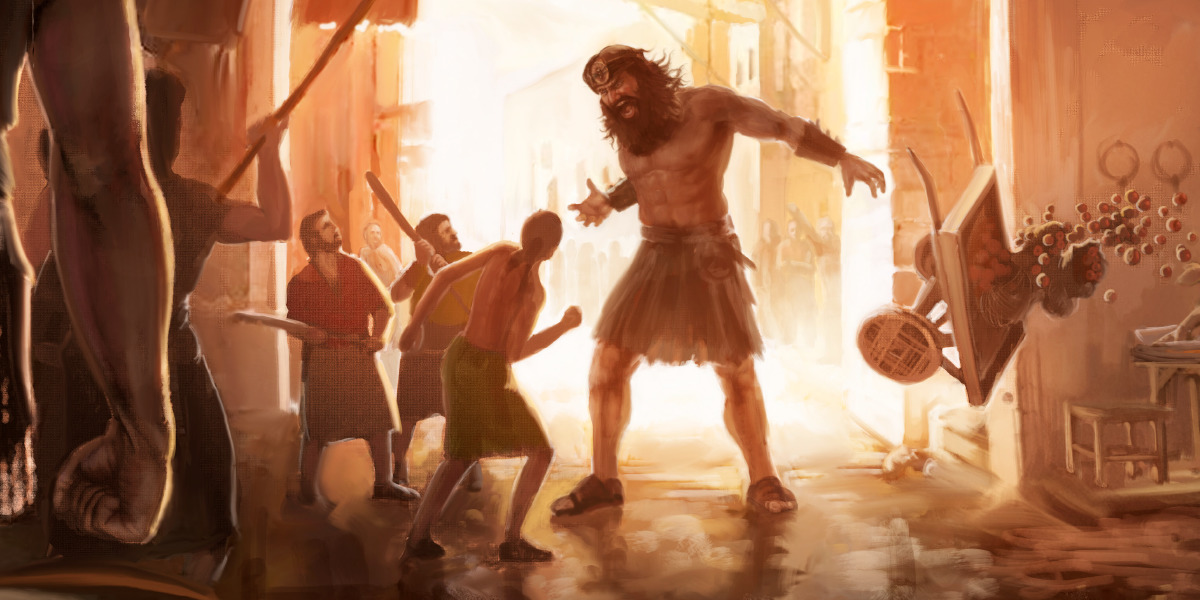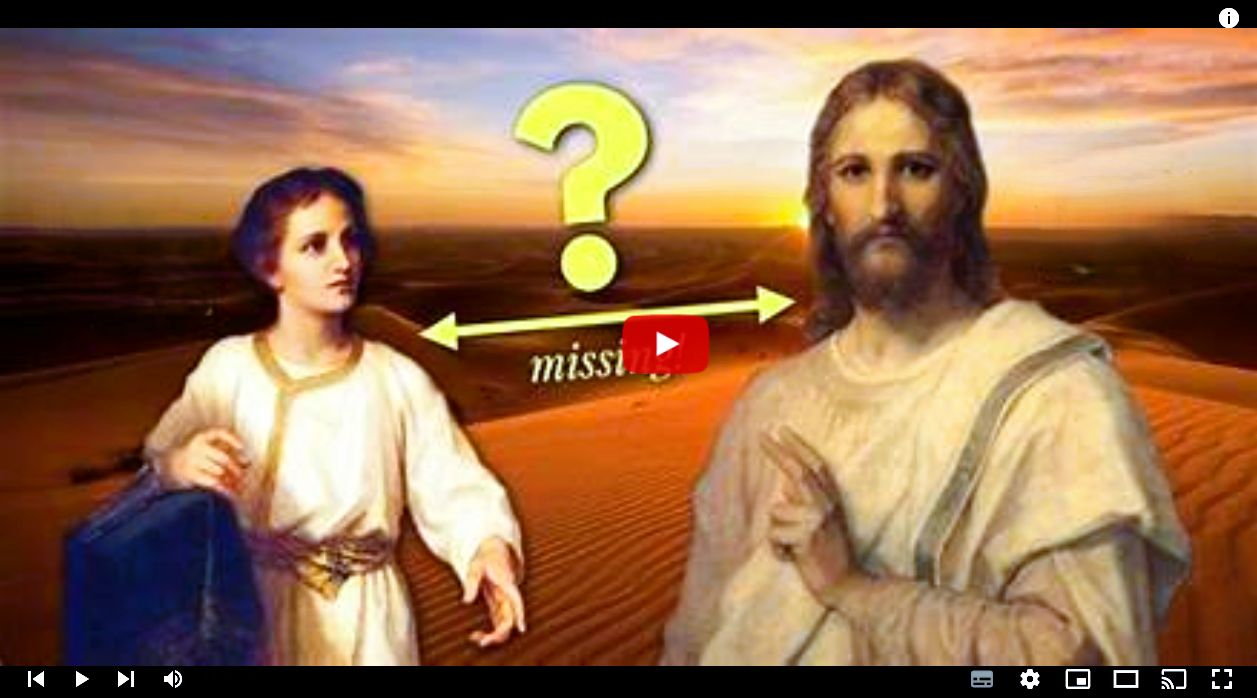The Book of Enoch Banned from The Bible Tells the True Story of Humanity
Ready to uncover the truth? Sick of the lies? Join our Telegram Channel now. It’s time for the real story! Stay informed! My gratitude to all my readers!
The Discovery of the Dead Sea Scrolls
Though they did not know it at that moment, these teenagers had made a historic discovery. Inside the jars were a series of ancient scrolls. In the years that followed this discovery, archaeologists, historians, and treasure hunters would find additional scroll fragments in ten other caves in the area, their composition forming some 800 to 900 manuscripts collectively known as the Dead Sea Scrolls.
Among these manuscripts were large portions of a mysterious non-canonical religious text which had long been forgotten. It was called the Book of Enoch.
In its entirety, The Book of Enoch is made up of five books – The Book of Watchers, Book of Parables, The Astronomical Book, The Dream Visions, and The Epistles of Enoch – containing some 100 chapters. These chapters tell the story of the 7th patriarch in the Book of Genesis – Enoch, the father of Methuselah and grandfather of Noah, the same Noah in the biblical story of Noah’s Ark.
Yet, this was not the biblical story of Noah’s Ark. In fact, the Book of Enoch provides an entirely different recounting of the events leading up to the Great Flood of Noah’s time, that is, a completely different doctrinal history.
The Story of the Book of Enoch
It tells a story of the Watchers, explained in biblical terms to be fallen angels, sent to earth to watch over humans at some undefined and ancient point in time. Unfortunately, far from merely watching humans, these Watchers became infatuated by human women, and in short order, began to engage in depraved sexual acts with them. The Book of Enoch tells of the children born through this interbreeding between Watchers and humans, called the Nephilim. These Nephilim were as described:
“giants and savages that endangered and pillaged humanity,” or, said another way, “supernatural, man-eating giants.”
Angered with what the Watchers had done, those described as gods chained them in a subterranean prison deep within the earth. Enoch became the go-between gods and imprisoned Watchers.
The Book describes Enoch’s journeys between heaven and earth in his role as an intermediary, how he
“flew with the angels and saw the rivers and mountains and the very ends of the earth from above.”
Yet, despite Enoch’s intervention, the gods decided the atrocity that the earth had become must be punished. Of course, the punishment would be a great flood. This flood would destroy the Nephilim and cement the Watchers in their prison. Beforehand, however, Enoch would be whisked away to heaven in a fiery chariot.
 Interestingly, the Book of Genesis, which tells of the Great Flood in Abrahamic traditions, references the Nephilim in Chapter 6, describing “heroes that were of old, warriors of renown.” This is not the only place in biblical canon which the Nephilim appear. In Numbers 13:32-33, the Israelites visit a land inhabited by Nephilim, who are so large they make the Israelites look like “grasshoppers.”
Interestingly, the Book of Genesis, which tells of the Great Flood in Abrahamic traditions, references the Nephilim in Chapter 6, describing “heroes that were of old, warriors of renown.” This is not the only place in biblical canon which the Nephilim appear. In Numbers 13:32-33, the Israelites visit a land inhabited by Nephilim, who are so large they make the Israelites look like “grasshoppers.”
Of course, many things in the Bible are seen in modern times as allegorical, that is, more philosophical myth than historical record. There is archaeological evidence of a great flood in the earth’s past, one, incidentally, also spoken about in countless religious and cultural traditions across the world. Had beings like Nephilim giants actually existed, surely there would be similar evidence?
What if there is?
Evidence of the Nephilim giants

This is not a phenomenon confined to the United States. Similarly, enormous skeletons have been found in the Amazon Rainforest, Africa, and elsewhere. In fact, stories of giants permeate human history and tradition. The famed explorer Marco Polo once wrote of a race of giants in Zanzibar who were “so strong they can carry as many as four ordinary men,” while the people of modern-day Tangier, Morocco once claimed their city’s founder was a giant named Antaeus.
According to Irish myth, the so-called Giant’s Causeway off the northeast coast of Ireland, an astonishing 40,000 interlocking columns of rock, was built by the Irish giant Finn McCool so that he could walk across the sea to Scotland to fight another giant. Further, stories of giants dot Norse legends and ancient Greek mythology.
Divine Dialogue: Mysterious Secret Phrase UNLOCKS the Power to Have Every Prayer Answered Instantly!
Perhaps if giants did exist, as these records across countless cultures suggest, then the Book of Enoch is less allegorical than it might originally appear, less fantastical myth and more grounded in actual history.
It is interesting to note that for centuries, the Book of Enoch was an important part of both Christian and Jewish religious traditions. Many, if not most, sects accepted the book as scripture. Further, some have even suggested that the Book of Enoch was the inspiration for the Book of Genesis, due to their many parallels and overlapping stories.
The question is thus, what happened?
WARNING: The Vatican Demanded this Be Kept Under Lock and Key: “The Divine Prayer – One Minute Prayer From Biblical Times”
Why is the Book of Enoch censored from the Bible?
To answer this, we must go back to the early centuries after the death of Jesus Christ. Far from the rigid canon of 39 Old Testament and 27 New Testament books that we know as the Bible today, originally, there were numerous gospels and religious texts which made up the broad spectrum of Christian tradition.
As the Christian religion grew after the death of Jesus, the burgeoning Christian church needed to know which texts should be read and followed, which teachings should be applied, which texts would be deemed as acceptable and divinely inspired. The church needed, out of diversity, to create uniformity; they needed an official canon.
In a story popularized in modern times by Dan Brown’s seminal work The Da Vinci Code, this canonization is remembered as happening, somewhat nefariously, at the Council of Nicea in the 4th century. There, according to the story, Emperor Constantine and other high-ranking church authorities shaped the Christian canon to conform to their own secret agenda. Unfortunately, this is not historically accurate. The Council of Nicea did not determine the official Christian canon. Don’t blame Dan Brown; the famed philosopher Voltaire made a similar assertion in the 1700s.
But while the story may not be factually accurate, it is accurate in a sense. High ranking members of the church certainly did pick and choose what to include in the official biblical canon; they argued, pulled strings, cast their opponents as heretics, and almost certainly sought to expand their own power. It just didn’t take place at a single council, but rather, as a much longer process between the 1st and 4th centuries. It is generally understood that by the end of the 4th century, the process was complete, and the Bible was officially set … without the Book of Enoch.
How could something as influential, if not vital, as the Book of Enoch be left out? To answer this question, one might examine other gospels which were also censored from the final product.
Consider the Gospel of Peter, a fragment of which was found in Egypt in 1886, which tells the long-missing story of a resurrected Jesus leaving his tomb, and features two gigantic angels and a floating cross that talks –
“And they heard a voice from the heavens, saying, ‘Thou hast preached to them that sleep.’ And a response was heard from the cross, ‘Yea.’”
Or, consider the Gospel of Mary, that notorious work in which Mary Magdalene is named not only as one of Jesus’ disciples, but his favorite one, perhaps even his wife. Within this gospel, the disciple Peter asks why he and the other disciples should listen to Mary, a woman, to which Matthew responds, “if the Savior made her worthy, who are you then, for your part, to cast her aside? Surely the Savior knows her full well. That is why he has loved her more than us.”
Like the Book of Enoch, these gospels tell extraordinary and history-challenging stories. Perhaps then, it should be no surprise that these texts were censored out by early powerbrokers of the official Christian canon.
Who is Enoch in the Bible?
It stands to reason that the Book of Enoch may have been totally forgotten if not for its survival in small orthodox sects of Ethiopian Jews. In fact, the only pre-modern version of the text was written in Ge’ez, an ancient African language. It was this version which Richard Laurence, the Archbishop of Cashel, used in 1821 to produce the first ever English translation of the book, the version used to inform study of the Dead Sea Scrolls.
Curiously, though the Book of Enoch was omitted from the established Christian canon and subsequently forgotten in all but the most obscure corners of religious tradition and theological study, the Bible does contain numerous references to it. There are references to the Nephilim in Genesis and Numbers. Genesis also contains an extensive recounting of Enoch’s lineage.
The Book of Hebrews describes how “God had taken [Enoch] away,” seemingly a reference to his being taken to heaven via fiery chariot before the Great Flood. Jude, meanwhile, contains an entire paragraph transcribed almost word-for-word from Enoch, suggesting that the Book may, in fact, have served as an early inspiration for canonical biblical texts.

Further, Corinthians 11:5-6 contains instructions from St. Paul that women should cover their heads while in church. This, seemingly a direct reference to the fact that the Watchers in the Book of Enoch were attracted to women with long flowing hair. This is a practice which remains in Roman Catholicism and Islam to this day.
Though it was censored, even forgotten, the Book of Enoch never truly disappeared.
There is something deeper behind the Book of Enoch and its incredible stories, something which goes beyond simply whether or not it is part of the Christian canon.
It has been pointed out that Enoch, the 7th patriarch of the Bible, seems to reflect the 7th antediluvian king, Enmenduranna, in Babylonian tradition. The ancient Greeks believed Enoch to be the same as the god Hermes, while ancient Egyptians had someone similar in their own tradition. The examples could continue, and so it must be asked: Why does Enoch, no matter his name, keep appearing in the traditions of the ancients?
The answer may go back further than the Greeks, Egyptians, or even the Babylonians, back to the ancient Sumerians.
The Anunnaki – Those Who Came from the Heaven
According to Sumerian texts, earth was visited by a group of supernatural beings sometime in the distant past. These visitors are described in Sumerian tradition in a way that is eerily similar to descriptions of the Watchers in the Book of Enoch. Instead of Watchers, however, Sumerians called these beings the Anunnaki, which literally means – “those who came from the heavens”. They were gods, to the Sumerians; to modern thinkers like Zecharia Sitchin and Erich von Däniken, they were an ancient race of aliens who came to earth.
Interestingly, Sumerian texts tell stories of these Anunnaki, much like the Watchers, beginning to interbreed with human beings, creating an entirely new species in the process, reflecting the creation of the Nephilim. Like the gods of the Book of Enoch, the Anunnaki became angered with the condition of the earth and brought about a great flood.
Is it possible the Book of Enoch, as well as other related traditions, are simply retelling the older Sumerian story of the Anunnaki?
The Unexplained Rapid Human Evolution
Consider the Agricultural Revolution, which began around 10,000 BCE, during which time human beings transitioned from a lifestyle of hunting and gathering to one of agriculture and settlement. According to historical record, as early as 9500 BCE, in what is now modern Kurdistan, barley, wheat, and rye were being cultivated; oats, peas, and lentils were being grown, while goats and sheep were domesticated. Some 500 years after that, copper and lead smelting were taking place in the region, alongside weaving and pottery making. Additionally, this ancient Kurdish culture was the first to develop a script, standing as one of humanity’s earliest literate societies.
Some have asked how human beings could have made this jump so fast. Interestingly, the Kurdish people claim to be the descendants of the “Children of the Djinn” – the Children of Spirits. Is this an ancient cultural reference to the procreation between Anunnaki and human women?
According to the Sumerians, it was the Anunnaki who brought advanced knowledge and technology to human beings, lending a helping hand, as it were, to the progression of human civilization. Many have suggested that this explains seemingly impossible monuments like the pyramids of Giza or Teotihuacan, those ancient monuments of “extraordinary sophistication which is completely unexplained by the cultural and social circumstances of historical record.” Perhaps this also explains how human beings were able to transition from nomadic hunter-gatherers to sophisticated civilizations in a historically insignificant amount of time.
The Correlation between the Book of Enoch and the Anunnaki Story
The Book of Enoch 8:1–3a reads, “And Azazel taught men to make swords and knives and shields and breastplates; and made known to them the metals [of the earth] and the art of working them; and bracelets and ornaments; and the use of antimony and the beautifying of the eyelids; and all kinds of costly stones and all coloring tinctures. And there arose much godlessness, and they committed fornication, and they were led astray and became corrupt in all their ways.”
Was the Book of Enoch, in this way, merely reflecting and retelling the story of the Anunnaki?
It is interesting that the most common example given of something “completely unexplained by the cultural and social circumstances of historical record,” that is to say, something the Anunnaki must surely have helped ancient humans with, are the Egyptian pyramids. According to the ancient Arabian historian Al-Maqrizi, these pyramids were built by a king named Saurid, who lived before the Great Flood. Incidentally, Saurid translated into Hebrew, is Enoch.
Wisdom: Eight Biblical Herbs, One Supplement, A LifeTime Of Wellness and Grace
Consider elsewhere in the Book of Enoch, in a chapter in which Enoch bears witness to “the secrets of the lightnings” and “the secrets of the thunder.” Some have suggested, this chapter is meant to illuminate the riddles of energy and electricity. Again, this relates directly to the Anunnaki, who many believe have been trying to reveal similar secrets to human beings through crop circles for some time. In our latest video, called Crop Circles Contain Blueprints for Free Energy Devices, we talked how in only the past few decades, crop circles have appeared across the world detailing complex mathematical equations, magnetic diagrams and motors, mechanical routers and the field lines of an electrical charge, the work, according to some, of the Anunnaki.
In fact, consider Enoch’s description of his journey to meet the gods while keeping in mind the UFO sightings which often accompany and compliment these crop circles:
“I was taken to a kind of floating palace,” Enoch said. “It was huge, like carved glass. The floor had glass plates. Through the floor you could see the stars we were crossing.”
With this in mind, one might wonder if the ‘fiery chariot’ which took Enoch away before the Great Flood was not in fact, an alien spacecraft.
Adam and Eve and the Garden of Eden
It may seem hard to believe that stories as mind-blowing as these, of Watchers and Anunnaki and Nephilim giants, stories which permeated ancient cultures for thousands of years, should be largely forgotten, the Sumerians largely erased from the pantheon of ancient civilizations, the Book of Enoch censored from biblical canon. However, given the way these stories fundamentally reshape human history and redefine what human beings are, their exclusion is perhaps no surprise.
Yet, maybe these stories were not, in fact, totally erased.
Consider the well-known biblical story of Adam and Eve and the Garden of Eden. Read it not literally, nor philosophically, but as an allegory. Read it metaphorically. God creates Adam to watch over the earth, much as the gods send the Watchers to do in the Book of Enoch. From Adam’s rib, god creates Eve; Adam and Eve procreate, representing the interbreeding between the Watchers and human females. Adam and Eve are told they can eat anything they want in the Garden of Eden, except fruit from the tree of knowledge of good and evil.
Divine Dialogue: Mysterious Secret Phrase UNLOCKS the Power to Have Every Prayer Answered Instantly!
Of course, they do eat from the tree of knowledge, representative of the Watchers bringing advanced technology and knowledge to human beings, which perhaps they were not mentally evolved enough to handle. Just as eating from the tree of knowledge provided Adam and Eve with the knowledge of God, so too did the book of Enoch describe how the Watchers “revealed the eternal secrets which were preserved for heaven, which men were striving to learn.” Reading the story of Adam and Eve this way, it is easy to see the parallels between it and the Book of Enoch.
And perhaps that is just the point.
Perhaps the people who wrote the story of Adam and Eve were simply retelling the stories in the Book of Enoch in their own way, retelling the Sumerian story of the Anunnaki, as so many across religions and cultures had before them, inserting this crucial piece of human history allegorically into their own religious canon, so these ancient records could continue to exist.
What is human history? Is it that which is understood through officially sanctioned history books? Or is it something deeper, something more incredible, if, perhaps, forgotten? Maybe the answer has been hiding in plain sight the whole time.













![BREAKING — FLORIDA DECLARES STATE OF EMERGENCY AS mRNA VACCINE DEATHS EXPLODE — “THIS IS GENOCIDE. NOT A SIDE EFFECT.” [OFFICIAL DATA]](https://amg-news.com/wp-content/uploads/2025/05/FLORIDA-DECLARES-STATE-OF-EMERGENCY-AS-mRNA-VACCINE-DEATHS-EXPLODE-450x253.png)

